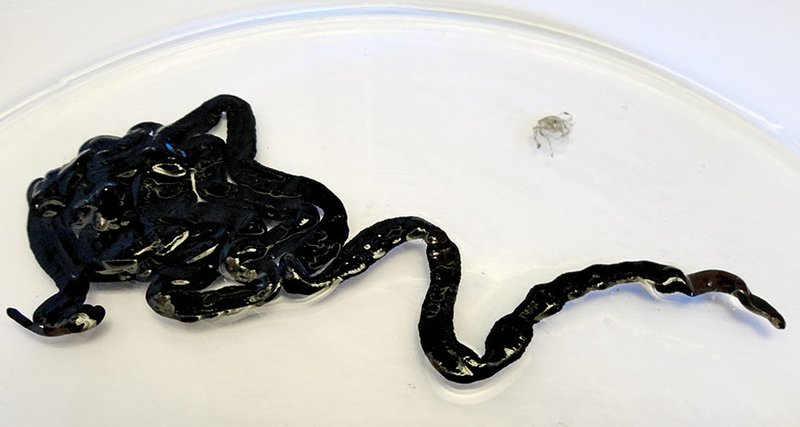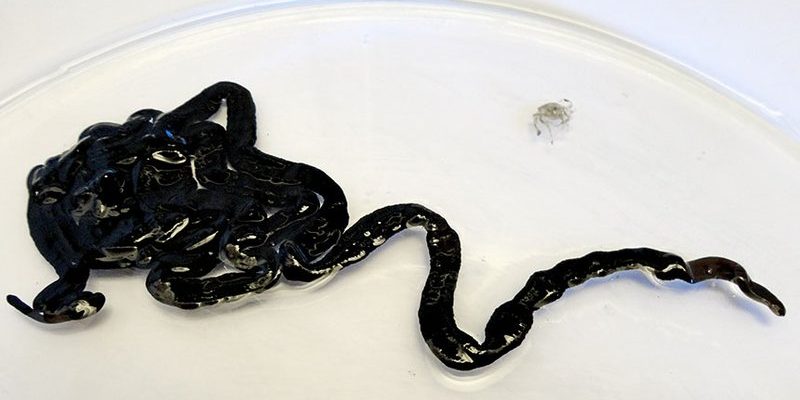
You could say that the bootlace worm is the superhero of the sea—long, colorful, and with a powerful defense mechanism. Just like the superheroes we enjoy reading about, this worm has a secret weapon: its toxic slime. It’s not just any old mucus; it’s packed with compounds that can deter predators. But why does this slimy substance matter, and how does it work? Let’s dive deeper!
What Is a Bootlace Worm?
Bootlace worms belong to the genus *Lineus*, which includes some of the longest worms on the planet—some can reach lengths of over 30 meters! Found mostly in the waters of the North Atlantic, especially around the British Isles, they tend to thrive in shallow, sandy environments, where they can burrow and hide.
You might be wondering what they look like. Bootlace worms have a long, slender body, often exhibiting beautiful colors that can vary from brown to bright blue, depending on the species. Their unique appearance makes them a favorite among marine biologists. They are also known to produce a fascinating slime that plays a huge role in their survival.
The Composition of Bootlace Worm Slime
So, what’s in this toxic slime that makes it so special? The slime of a bootlace worm is primarily made up of **mucins**, which are glycoproteins that give the slime its gel-like texture. Imagine the slimy coating of a snail, but much, much more complex.
Additionally, bootlace worm slime contains various **bioactive compounds** that can be harmful to predators. While the specific chemical makeup can vary between species, researchers have identified a range of compounds, including proteins and enzymes. The slime is designed to incapacitate potential threats, giving the worm time to escape. It’s sort of like a magician’s smoke bomb—one moment they’re there, and the next, they vanish in a cloud of goo!
How Bootlace Worm Slime Works as a Defense Mechanism
Here’s the thing: marine environments can be pretty dangerous. Bootlace worms face predators like fish and crustaceans that would happily make a meal out of them. Enter the slime. When threatened, a bootlace worm can secrete this toxic substance, blanketing itself in a protective layer.
This slime doesn’t just deter predators; it can also cause irritation or even harm. It’s a clever tactic! Think of it like having a trusty shield that not only provides safety but also delivers a little sting to anyone who gets too close. Predators quickly learn to steer clear of these colorful worms, making the bootlace worm a fascinating example of evolution in action.
Real-World Implications of Bootlace Worm Toxicity
The toxic slime of bootlace worms doesn’t just have implications for predators; it also has potential applications for humans. Researchers are studying these bioactive compounds for their possible use in medicine and biotechnology. For instance, some components might have anti-inflammatory properties or even potential uses in wound healing.
Isn’t that wild? What seems like a simple slime could lead to breakthroughs in healthcare. Scientists are always on the lookout for natural sources of new medicines, and the bootlace worm might be a hidden gem in the ocean.
Comparing Bootlace Worms to Other Marine Creatures
When we think about toxicity in marine life, we often think of creatures like jellyfish or pufferfish. So, how do bootlace worms stack up against them? While jellyfish use stinging cells (nematocysts) to deliver toxins, bootlace worms employ a different strategy with their slime.
– **Jellyfish**: Use stinging tentacles to paralyze their prey.
– **Pufferfish**: Contain tetrodotoxin, a potent nerve toxin, throughout their bodies for defense.
– **Bootlace Worms**: Rely on a protective, slippery slime to fend off threats.
Each of these creatures has evolved unique methods tailored to their environments and lifestyles. Understanding these differences not only highlights the diversity of marine life but also underscores the intricate ways in which organisms adapt to survive.
The Role of Bootlace Worms in Their Ecosystem
Bootlace worms might not be the first creatures that come to mind when considering the ocean’s ecosystem, but they play an important role. By being a part of the food web, they contribute to the balance of their marine habitat. Their presence can indicate the health of the environment, making them valuable to researchers and conservationists.
Moreover, their toxic properties might help control populations of certain predators, indirectly supporting the broader ecosystem. Every creature, including the humble bootlace worm, plays a part in the fascinating tapestry of life beneath the waves.
So, there you have it! The bootlace worm and its remarkable toxic slime are more than just a quirky marine oddity; they’re a perfect example of nature’s ingenuity. With their powerful defense mechanism, these creatures remind us that even in the ocean’s depths, survival often hinges on clever adaptations.
Next time you find yourself near the beach or reading about marine life, you might think about those long, colorful worms sliding through the sand. Their toxic slime not only protects them but may also lead to new discoveries in science and medicine. Nature never ceases to amaze, and the bootlace worm is just one of its many treasures.

